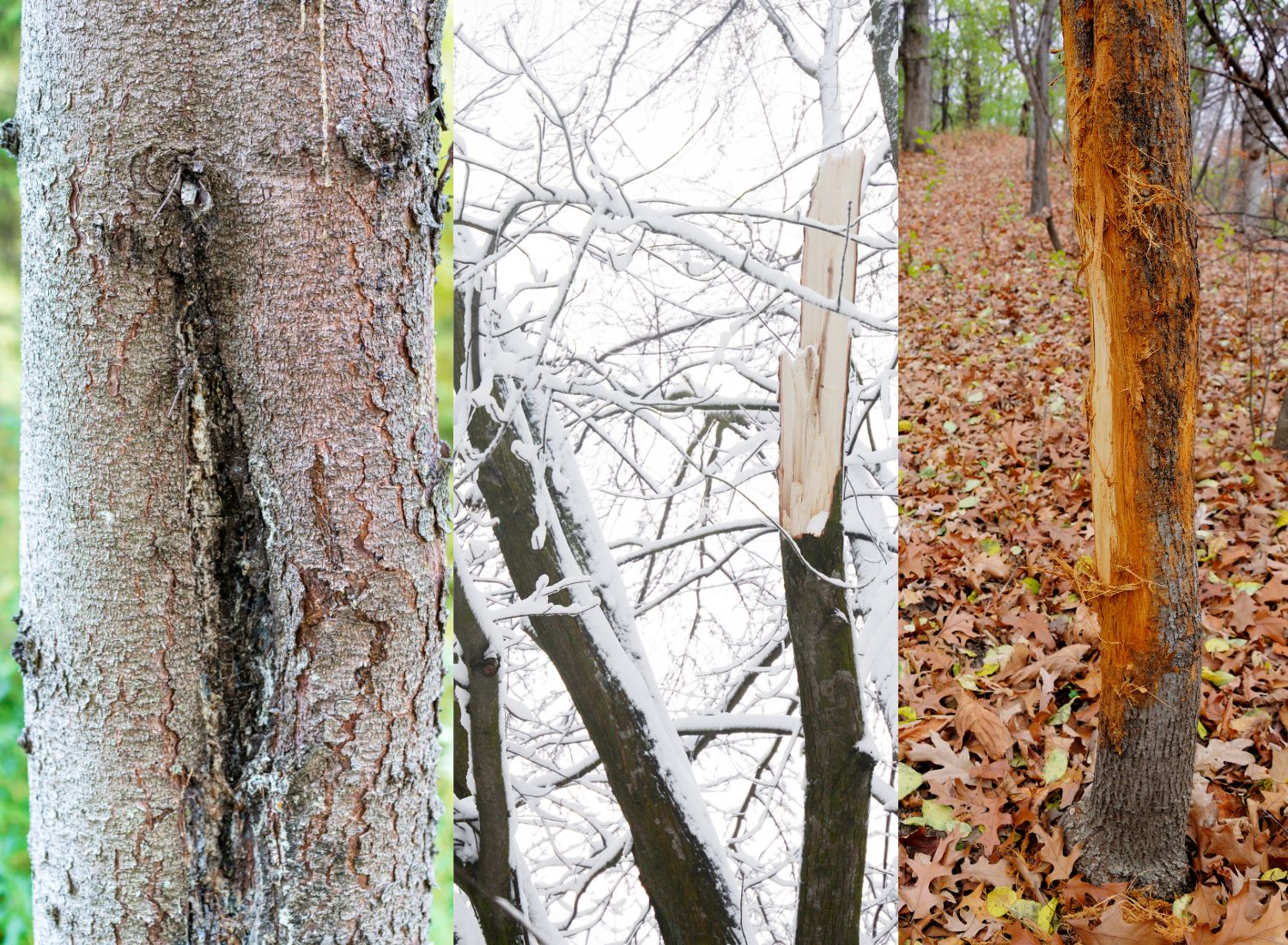How to Prevent Winter Damage to Your Trees

Winter brings a serene, snowy beauty to landscapes, but for the trees in your yard, the season can be anything but tranquil. Freezing temperatures, heavy snow, ice storms, and fluctuating weather conditions pose significant threats to tree health. Without proper care and preparation, your trees could suffer irreparable damage, compromising their structural integrity and long-term health.
In this blog post, we’ll explore how winter weather can harm your trees and provide actionable tips to maintain and protect them throughout the season.
How Winter Weather Can Damage Your Trees
1. Frost Cracks
- Occur when rapid temperature changes cause tree bark to expand and contract.
- Sunny winter days warm and expand the bark, which contracts suddenly at night, causing cracks.
- These cracks create entry points for pests and diseases, weakening the tree over time.
2. Ice Damage
- Ice accumulation adds weight to branches, often exceeding their capacity.
- Can cause branches to snap, leading to physical damage and increased infection risks.
- Species like birch and willow are particularly vulnerable due to their flexible branches.
3. Heavy Snow
- Snow accumulation stresses branches, especially weak or damaged ones.
- Evergreens are more at risk as their dense needles retain snow, increasing the load.
- Broken branches can leave jagged wounds, which heal slowly and increase disease susceptibility.
4. Winter Desiccation
- Happens when roots cannot absorb enough water from frozen soil to replace moisture lost through leaves or needles.
- Common in evergreens, which continue to lose water during winter.
- Signs include browning or yellowing needles and potential branch dieback.
5. Animal Damage
- Wildlife such as deer, rabbits, and voles often feed on tree bark during winter.
- Deer may strip bark or rub antlers, while smaller animals chew on trunks or roots.
- Girdling (removing bark around the trunk) can cut off the tree’s nutrient supply and lead to death.
6. Salt Damage
- De-icing salt can seep into the soil, damaging roots and altering the soil’s chemical balance.
- Often results in browning or stunted growth in trees near salted roads or walkways.
How to Maintain and Protect Your Trees in Winter
Now that you understand the risks, here are steps to safeguard your trees during the colder months.
1. Mulch to Protect Roots
- Apply a 2-3 inch layer of organic mulch, such as wood chips or shredded bark, around the base of your trees.
- Helps insulate roots from freezing temperatures and reduces moisture loss.
- Leave space around the trunk to prevent rot.
2. Water Before the Ground Freezes
- Hydrated trees are better equipped to withstand winter stress.
- Water your trees thoroughly in late fall before the ground freezes.
- Focus on newly planted trees and evergreens, which are more prone to winter desiccation.
3. Prune for Structural Strength
- Remove dead, weak, or overgrown branches in late fall to reduce the risk of winter breakage.
- Focus on branches that could pose safety hazards if they fall.
- Proper pruning strengthens the tree and improves its appearance.
- Tip: Avoid pruning in late winter or early spring when sap begins to flow, as this can leave the tree vulnerable to infections.
4. Wrap Vulnerable Trees
- Protect young or thin-barked trees by wrapping the trunk with burlap or tree wrap.
- Prevents frost cracks and animal damage.
- Secure the wrap with tape or twine and remove it in early spring to avoid mold or insect infestations.
5. Gently Remove Snow and Ice
- Avoid shaking snow or ice off branches vigorously, as this can cause damage.
- Use a broom or rake to gently brush off snow, starting from the top and working downward.
- Let ice melt naturally to prevent breaking branches.
6. Protect Against Wildlife
- Install tree guards or wire mesh around the base of your trees to deter animals.
- Use fencing or repellents to keep deer away.
- Check and maintain these protections throughout the winter.
7. Minimize Salt Exposure
- Opt for de-icing alternatives like sand or calcium magnesium acetate, which are less harmful to trees.
- Create barriers (e.g., with burlap) to shield trees from salt spray.
- Flush the soil with water in spring to remove excess salt.
8. Inspect Your Trees Regularly
- Inspect your trees after winter storms for:
- Broken branches
- Leaning trunks
- Signs of stress
- Address issues promptly to prevent further damage.
Conclusion
Winter presents numerous challenges for your lawn’s trees, but proactive care can help them emerge healthier in spring. By understanding the threats—from frost cracks and heavy snow to desiccation and wildlife—and taking preventive measures, you can protect your trees and ensure their longevity.
Key Benefits of Winter Tree Maintenance:
- Preserves the beauty and value of your landscape.
- Prepares your trees for vibrant growth in the warmer months.
- Ensures your yard remains a haven for healthy, thriving trees.
With these tips, your trees can weather the harshest winter conditions and flourish in the spring.